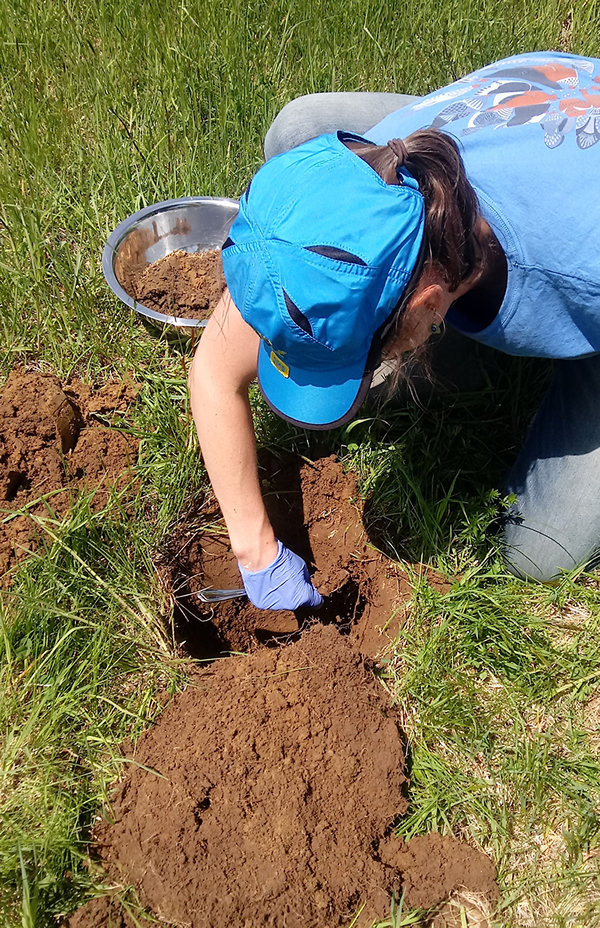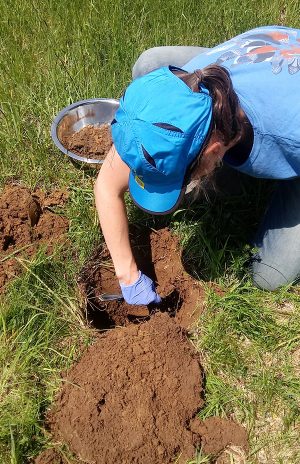2020 PFAS Update Series, Part I
New series explores ramifications of PFAS in recycled organics and process storm water — and technology options to treat the contamination.
Craig Coker
A lot of media attention is currently given to the issue of per- and polyfluoroalkyl substances (PFAS). The issues for composting and anaerobic digestion facilities are the presence of PFAS in finished compost or digestate products (Beecher and Brown, 2018, Parts I and II), and the presence of PFAS in facility storm water runoff. Composting or digestion facilities that take in biosolids, industrial residuals, and food scraps containing grease-resistant food packaging are receptors of PFAS chemicals.
What Are PFAS?
PFAS are a large group of compounds used in nonstick coatings, textiles, paper products, some firefighting foams, and many other products. These compounds have many manufacturing and product applications because they repel oil and water, resist temperature extremes, and reduce friction. PFAS include compounds that vary in molecular weight and can have multiple structures and functional groups. Over the years, manufacturing and use of these compounds has resulted in their presence in the environment. The scientific community is rapidly recognizing the environmental and health effects of PFAS.
Some of the perfluoroalkyl acids, such as perfluorooctanoic acid (PFOA) and perfluorooctane sulfonate (PFOS), are mobile, persistent, and bioaccumulative. Researchers are learning more about potential degradation of these compounds by bacteria in the environment, and findings need to be corroborated. In May 2016, EPA established drinking water health advisories (HAs) of 70 parts per trillion (ppt) (0.07 micrograms per liter) for the combined concentrations of PFOS and PFOA (EPA, 2017). PFOA (C8HF15O2) is highly water-soluble (9,500 mg/L at 25°C.) whereas PFOS (C8HF17O3S) is much less water-soluble (680 mg/L at 25°C.).
Aqueous film-forming foams (AFFFs) are commercial surfactant solutions used for several decades by the U.S. military, civilian airports, and other facilities to extinguish hydrocarbon fires. Manufacturing facilities that may be sources of PFAS releases to the environment include textile and leather processors, paper mills, metal finishers, wire manufacturers, and plating facilities, as well as facilities using surfactants, resins, molds, plastics, photolithography, and semiconductors. The vast majority of significant PFAS contamination sites around the world are associated with fire-fighting activities and industrial facilities and discharges. At such sites, levels of PFAS in soils are near 1,000 ppb or more and groundwater PFAS levels are in the 1,000s to 100,000s of ppt.
Landfills are recipients of PFAS because they are the ultimate repositories not only for PFAS-contaminated industrial waste, sewage sludge, and waste from site mitigation, but also for PFAS-bearing consumer goods treated with hydrophobic, stain-resistant coatings. PFAS may also be introduced to the environment through wastewater effluent, septic systems, and via the land application of biosolids as a beneficial soil amendment, potentially allowing PFAS to enter surface water through runoff or infiltrate to groundwater. State and research data indicate that the large majority of wastewater and biosolids management, where there has been no direct, large industrial discharge, results in PFAS levels in soils in the 10s to low 100s of parts per billion (ppb) and 10s of ppt in groundwater (NEBRA, 2019).
PFAS In Composts
Research at Purdue University detected all 17 of the PFAS chemicals for which they analyzed, including PFOA and PFOS, in 18 commercially available fertilizers (of which 11 were biosolids-based and 5 were composted biosolids) and 10 solid waste-derived composts (Lee, 2019). Composted biosolids had concentrations of PFAS ranging from 20 to 85 micrograms per kilogram (µg/kg, ppb) while composts made from various combinations of food scraps, compostable servingware and yard trimmings had PFAS concentrations between 22 and 52 µg/kg. Pure yard trimmings compost registered concentrations of 2 to 5 µg/kg.
In March 2019, the Maine Department of Environmental Protection (DEP) imposed a moratorium on biosolids distribution and use, pending testing of all biosolids for PFAS. Maine DEP is applying very low soil screening levels (2.5 µg/kg for PFOA and 5.2 µg/kg for PFOS), and all but one Maine biosolids product exceeds the screening levels. Exceeding the screening values does not preclude possible use of the biosolids. Maine DEP regulations allow “proof” using loading rate calculations that biosolids applied to soil for several decades will not raise soil levels above the screening values. Those calculations have now been applied to several Class A products, such as compost from the Casella Organics’ Hawk Ridge Compost Facility in Unity, New England’s largest compost facility. Maine DEP has determined that that compost is safe for use, and permitted resumed sales and distribution in mid-April 2019 until June of 2020 (NEBRA, 2019).
In June 2019, Golden Heart Utilities (GHU) in Fairbanks, Alaska voluntarily suspended sales of its biosolids compost after detecting PFAS. The Utility said in a statement, “Analytical tests have indicated the presence of PFAS in last season’s compost stock. GHU has been proactive in screening and testing the compost for PFAS materials. Based on information available to us at this time, it is our understanding that the risk of PFAS in biosolids (compost) has not been determined and more studies need to be conducted to properly determine the risk. Given the uncertainty and general concerns regarding PFAS, GHU is erring on the side of caution and decided to cease the distribution of compost. Alaska Department Environmental Conservation (ADEC) agreed with the decision.” It should be noted that the exhaustive risk assessment conducted prior to promulgation of U.S. EPA’s Part 503 biosolids regulations has not yet been conducted for PFAS.
If you make compost from biosolids and/or from food scraps, it is likely your compost does contain PFAS chemicals. Unfortunately, it is very difficult to test for PFAS in composts as the EPA-approved laboratory procedures in use are those for drinking water. The American Society for Testing and Materials (ASTM) does have a standard (D7968-17a) for “Determination of Polyfluorinated Compounds in Soil by Liquid Chromatography Tandem Mass Spectrometry (LC/MS/MS)”. However, most commercial labs are using their own “modified Method 537”, which involves isotope dilution that achieves lower detection levels. Each lab has developed its own modified method, meaning results from one lab versus another may not be comparable. Recent quotes for compost testing have been in the $250 to $500/sample range.
There are no known methods for removing PFAS chemicals from composts other than to stop accepting feedstocks that contain PFAS. Given the long residence times in some composting facilities, it would take many months, if not longer, for compost qualities to improve to the point where no PFAS were found. Also, the very small concentrations being measured offer significant potential for cross-contamination with loader buckets, temperature probes and sampling tools.
While regulatory moratoria on compost sales may be unlikely, knowledgeable consumers may ask questions about compost PFAS content, which may cause issues with product sales.
Craig Coker is a Senior Editor at BioCycle and CEO of Coker Composting & Consulting near Roanoke, VA. He can be reached at ccoker@jgpress.com.
Part II of this article series: “Treatment Of PFAS-Contaminated Composting Site Runoff”
References
Agency for Toxic Substances and Disease Registry, “Toxicological Profile for Perfluoroalkyls, Draft for Public Comment,” June 2018.
Lee, L., “PFAS -More Than You Ever Wanted to Know and Then Some”, Michigan Water Environment Association 2019 Biosolids Conference, March 2019.
North East Biosolids and Residuals Association, “Biosolids & Septage Management Affected by Strict PFAS Limits in New England”, May 9, 2019.











